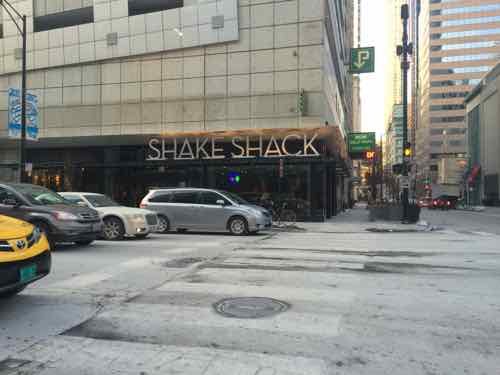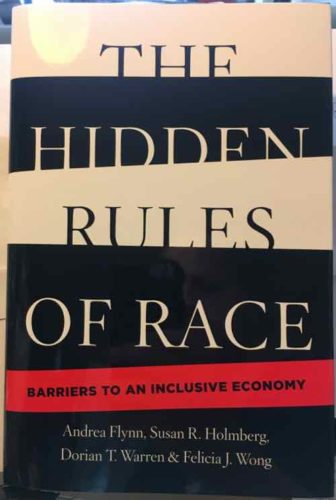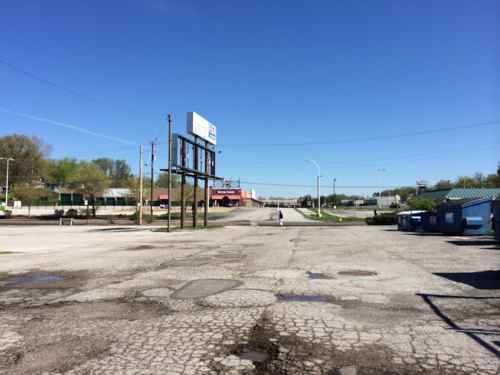Opinion: Shake Shack Kinda A Big Deal For St. Louis (UPDATED)
|
|
The origins of Shake Shack were hummbl;e…a cart. From their website:
Shake Shack sprouted from a hot dog cart in Madison Square Park in Manhattan to support the Madison Square Park Conservancy’s first art installation. The cart was quite the success, with Shack fans lined up daily for three summers.
In 2004, a permanent kiosk opened in the park: Shake Shack was born. This modern day “roadside” burger stand serves up the most delicious burgers, hot dogs, frozen custard, shakes, beer, wine and more. An instant neighborhood fixture, Shake Shack welcomed people from all over the city, country and world who gathered together to enjoy fresh, simple, high-quality versions of the classics in a majestic setting. The rest, as they say, is burger history.
Founder Danny Meyer is originally from the St. Louis region. Meyer founded Shake Shack in 2004, but he was well-established in NYC by that point.
The fancy-casual flagship of Danny Meyer’s empire, opened in 1985—which led the way for a hit parade of restaurants including Gramercy Tavern, the Modern, Blue Smoke, North End Grill, Untitled, Shake Shack, and, for a time, Eleven Madison Park—closed at the end of 2015, because of an untenable rent hike, with a promise to reopen within a year. Meyer is nothing if not trustworthy. In December [2016], the U.S.C. revamp débuted in the old City Crab space, still close enough to the greenmarket to stock up on winter rutabagas and retain its farm-to-table ethos, an idea it pioneered. (The New Yorker)
Meyer has built a huge culinary empire, survived in the highly-competative casual dining marketplace. From 2015:, Compared to its peers, Shake Shack has a much higher P/E ratio than the average of 32, but because Shake Shack is growing rapidly through expansion and is still a new company, the company’s earnings may yet rise in the future to bring the P/E in line with the industry. The relatively low profit margins and return on equity might also be attributed to its rapid expansion. On the other hand, it might point to the company trying to grow too much too quickly for its own good. (Investopedia)
St. Louis now joins cities that have a Shake Shack. There’s the usual suspects like NYC, Chicago, LA, and Dallas. Ahead of us were cities like Lexington (KY), Detroit, and San Antonio. Some bigger regions don’t have a Shake Shack yet: Seattle, Portland, and Denver.
I’ve never been to a Shake Shack before, though we’ve passed by one a block West of Chicago’s Michigan Ave numerous times.

I recently told my husband we could go next year…he wants to try it this year…so we’ll brave the lines in the next few weeks. St. Louis’ Shake Shack is located at 32 N Euclid, in The Euclid building.
From the recent non-scientific Sunday Poll;
Q: Agree or disagree: Shake Shack opening in St. Louis is no big deal, we have plenty of burger & shake joints already.
- Strongly agree 6 [16.22%]
- Agree 7 [18.92%]
- Somewhat agree 8 [21.62%]
- Neither agree or disagree 4 [10.81%]
- Somewhat disagree 4 [10.81%]
- Disagree 6 [16.22%]
- Strongly disagree 1 [2.7%]
- Unsure/No Answer 1 -2.7%]
We’ll see if it lives up to the hype. I’m looking forward to trying their ‘Shroom Burger (“Crisp-fried portobello mushroom filled with melted muenster and cheddar cheeses, topped with lettuce, tomato, ShackSauce™”)
— Steve Patterson
Note: This post was updated at 7:45am on 12/6/2017 to correct location information.



